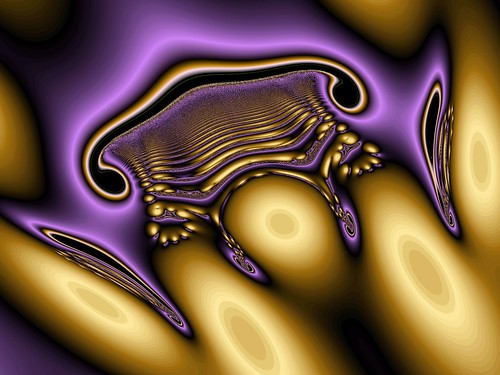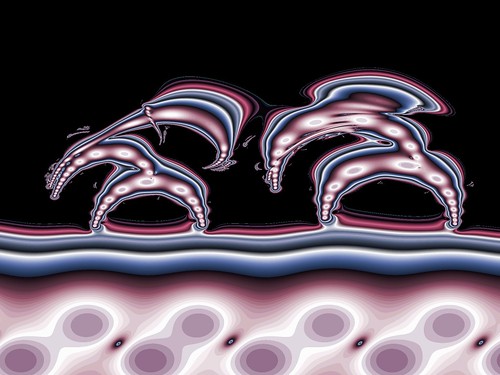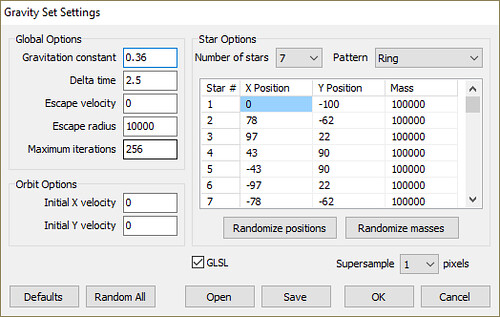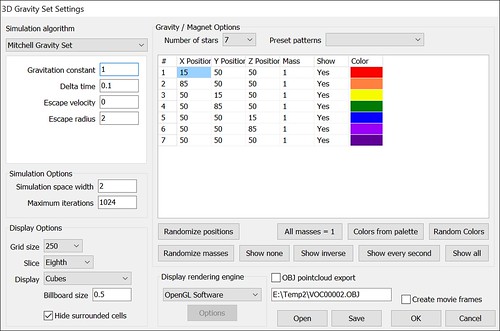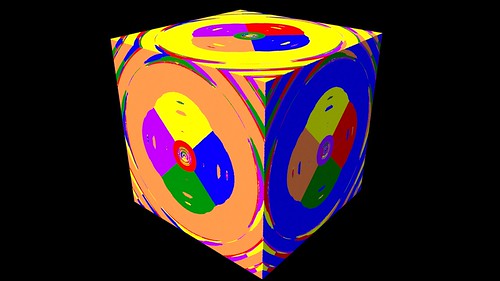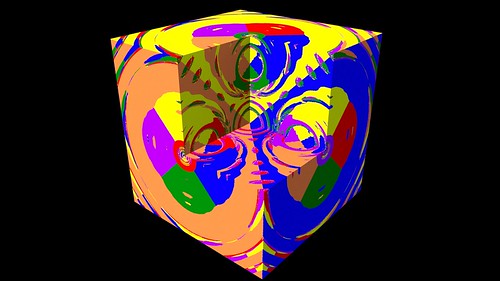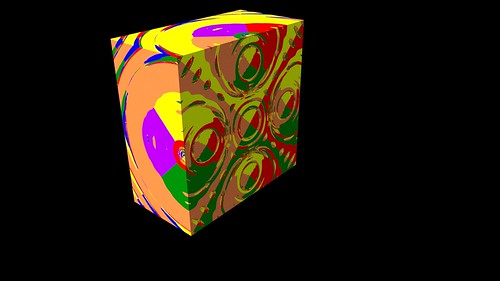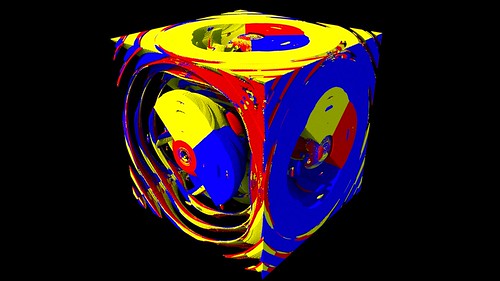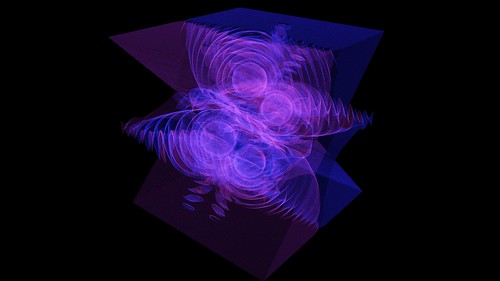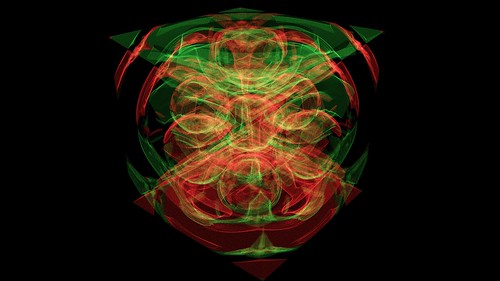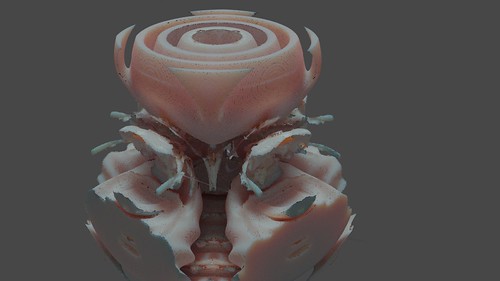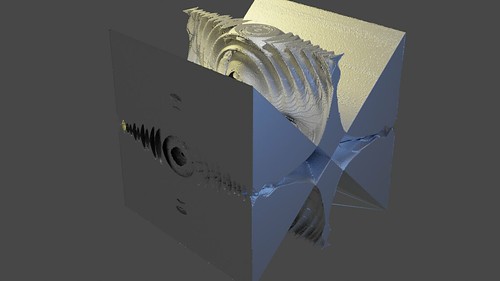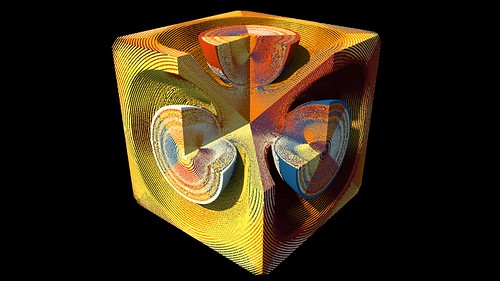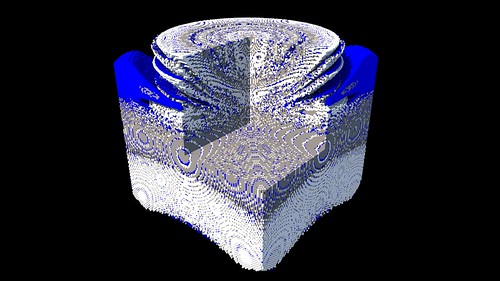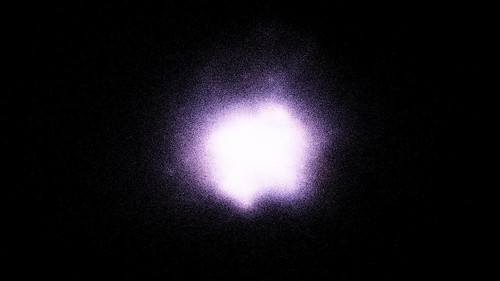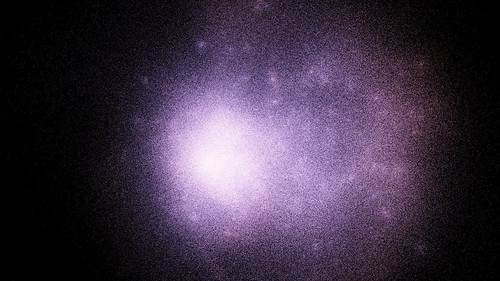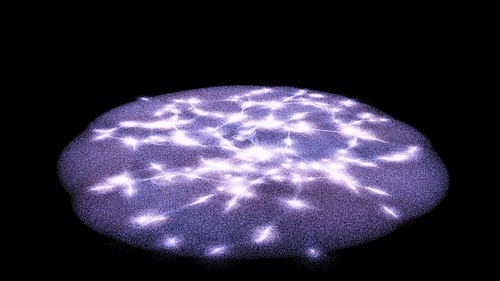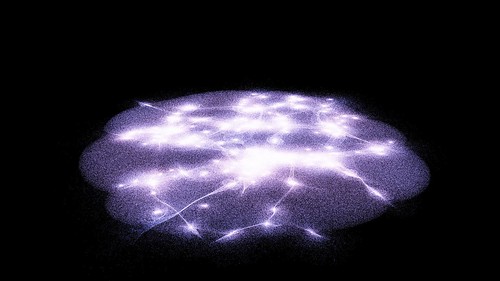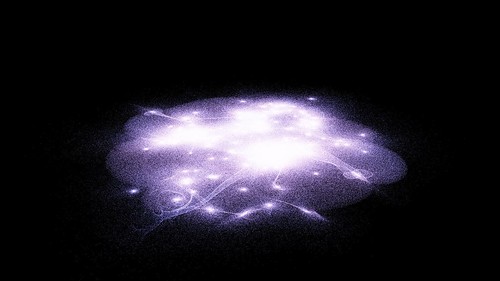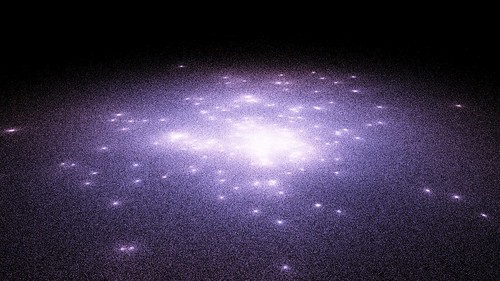Origins
Back in the 1980’s Fred Mitchell designed a method to visualize Newtonian gravity he called the Mitchell Gravity Set or MGS. See here for his page explaining MGS.
This process of plotting dynamic systems is usually referred to as basins of attraction. See this paper and this paper for other versions of plotting gravitational basins of attraction. Similar methods are used when plotting Root-Finding Fractals and the basins of a Magnetic Pendulum.
The 2D images in this post are from when I first experimented with MGS back in 2005.
The basics of MGS is that you have a number of gravity objects (stars or gravity wells) in 2D space. Each pixel of a 2D image becomes the starting coordinate for a particle in that 2D space. The particle is attracted to the stars through Newtonian gravity and moves. You follow the path the particle takes for a number of steps and color the pixel depending on how long it took to be flung out of the simulation area.
I ended up rewriting/translating my old code into GLSL for speed. Click here to see the shader source code that generates these 2D Gravity Set images.
By playing with the various star positions and masses you can get a variety of different images.
The following image shows the current Gravity Set Options dialog in Visions of Chaos showing the various settings that can be tweaked.
Revisiting and Extending Into The 3rd Dimension
I was recently contacted by Fred again and he mentioned he was working on getting a 3D version of MGS going. Getting the 2D code going in 3D is simple enough. Just a few extra lines for adding the Z dimension, so I was inspired to have a go at seeing what the 3D versions could look like. The settings dialog is extended as follows.
Similar to the other 3D grid based displays like 3D Cellular Automata I have worked with, displaying a 3D grid of values can be tricky.
The following examples use a 500x500x500 resolution space.
The most obvious is a 3D Grid of little cubes. Each smaller cube is a starting point for the gravity calculations. Color the cubes depending on which gravity well they come closest to during their journey.
That gives you a general idea of what the shapes of the 3D Gravity Set will be, but the interior is completely hidden.
You can slice an eighth of the cubes away….
or even slice a half…
Another option is to only display the cubes for only half of the gravity wells….
or even for only a single well.
Then came the idea for “volumetric rendering”. I already had code for rendering transparent billboard quads so I used that. I am only rendering the edges of each gravity well area. If you render all points the image is just a white blob mess.
Another method. Export the visible cubes as a OBJ point cloud. Import the OBJ into MeshLab. Use MeshLab to generate normals for the points and then marching cubes to generate a mesh from the point cloud. Export the mesh as a PLY format file. Import the PLY into Blender and render it. These are rough results. I am sure someone who knows more about MeshLab and Blender could clean up the mesh and make a much better looking render.
Here is a sample movie of rotating gravity sets.
Magnetic Pendulum Alternative to MGS
I also tried using Magnetic Pendulum formulas in 3D to do similar plots. The formula is a 3D extension of the 2D code I used here. Otherwise the rest of the code is the same as for the 3D MGS above.
Availability
Both 2D and 3D Gravity Set Fractals are now included in the latest version of Visions of Chaos.
Jason.

